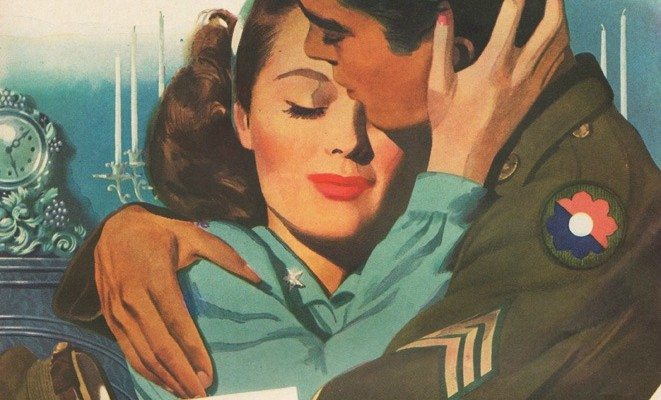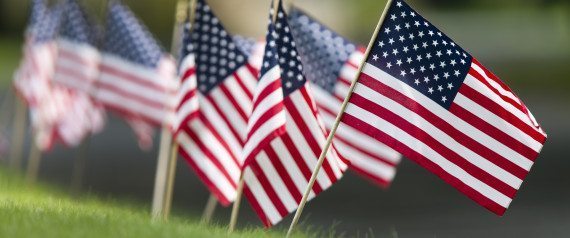As another ruck march is completed raising the awareness to issues of veteran suicide and post-traumatic stress disorder, as well as to show the support we have for each other within the veteran community, I can’t help but wonder what makes our crisis – a crisis.
A brother and I had a discussion one day, as to who or what actually quantifies the staggering and unacceptable statistic of 22 (now 23) veterans daily, who choose to take control of their demons by ending it all. We were unable to come up as to who actually reports or keeps track of the numbers, but several things are clear. The rates are unacceptable. They include veterans from several conflicts, including Vietnam, Somalia, Desert Storm, OIF, OEF and others. They include combat and non-combat veterans, but the facts seems to indicate that the combat vets are in notably higher proportion.
We remember our fallen as heroes which they were, and in light of the system which failed them. We honor them, by learning from them and remembering their sacrifices, and living our lives to be worthy of those sacrifices. This is largely our problem. As much as we try to make the public, the media, the VA and our command elements aware and included, this remains to be by and large a boots-on-the ground issue. It is therefore up to us to do more.
My question is, why are the numbers of our generation so much higher than those of our grandfathers and fathers? Several factors affect not only our perception of the problem, but also its reality and the possible solutions. World War II was an all-in conflict. It was a culture, not just a war. A way of life for three generations of those who served, and contributed to the war effort. From World War I to Vietnam, these generations accepted without question not just what wasn’t asked, or demanded or them, but what needed to be done.
Everyone participated in some way, shape or form. There was no question as to what was the right thing to do, everyone did it, because it was the only thing to do. Whether fighting, building things which enabled fighting, supporting the family unit or infrastructure back home, living on rationed portions, everyone was there first hand and everyone did it.
People were gone for years, and the value of life appeared less as heroes were buried by dozens or hundreds after a single engagement. When the servicemen and women retuned home, it was also part of the culture to quietly resume things which were considered normal. Pour the war fighting-force back into the economy building-force. Men quietly put away their issues, feelings and memories, and resumed the next things which had to be done. Being fathers, businessmen, teachers… They dealt with their issues in ways no different than we do. Whether right or wrong, they ignored them in order to move on. But the difference was that no one forced them to move on. No one asked them to acclimate or be normal again. It was simply the next step the entire American culture and society did as a whole. There was no need to convince anyone what was right and wrong, or to a large degree separate politics from the war time killing, and its ethical contradictions.
In contrast, and even with the draft, the Vietnam War has brought us a conflict within a conflict. Troops returning from the battlefields were all but expected by the mainstream to put aside their honor, values and experiences, crawl into a cave and stay there. While some partied, got stoned, and painted a picture of their utopian reality, our veterans attempted to return to what they remembered of America. And it didn’t really exist. It was a hard lesson learned, by strong and humble people. So much so, that they vowed for that never to happen again.
I remember drinking at the VFW one day, when a Vietnam era Marine neighbor of mine, pointed to me and told everyone at the bar that I volunteered for a deployment. A mountain of a man quietly walked up to me and gave me a hug. I didn’t know the full meaning of that gesture at the time, but what came out later was the fact that every one of those Vietnam vets has vowed that as much as they can, no OIF/OEF troop will go through the same thing they went through. Fast forward to the conflicts and our generations of war fighters. I realize that in combining several generations who have served since 9-11, I am mixing a large group. Someone who may by now have retired, and someone who was in grade school when the towers went down. The unique thing about doing this, is that in speaking with younger generation of troops, one will find that many of the motivations, values and deployments are similar. We are still largely fighting the same enemy. And dealing with the same issues.
We serve within a culture which favors social media, and relies heavily on mainstream news. Not unlike Vietnam, much of what happens on the battlefield is not represented in the news at all, or it is skewed to suit a political agenda, or whatever sensationalizes and inflates the ratings. People’s opinions are formed by one glance at a social media page, as do their judgements. And that’s all the knowledge they need, or want.
There is no culture of war, but rather a war fighter culture within a separate culture of those who support, as well as those who ignore. The supporters and patriots by far outnumber those who ignore every facet of struggle, sacrifice and commitment. However, upon return to the “normal” way of life we still find it difficult to relate to anyone but other people like us. Others who have been there, or done that. And so the returning service member, the veteran is left to count on his battle buddies. The ones who were there all along, and the ones who are likely dealing with the same issues. Well, there is the VA system. The mental health and social support agencies. Leaving most of the gripes for a separate discussion, we know there is a serious lack of effectiveness. A lot of people are outraged over the issues, but few will actually do something about it. In the meantime, the veteran is dealing with his or her crisis nonstop. While politicians discuss, media reports, the military unit refers or labels or discharges, the veteran is alone… unless he is with others like him.
The fact remains that missions come and go, and having come back from one deployment, which maybe 8-16 months long, returned home and expected to be “normal”, there is another deployment, another return and so on and so forth. Every time the issues are the same, and the only time we feel ok again is when we’re back in the sh*&. Things make sense there for a lot of war fighters. They are clearer, values are sharper, routines are clearer, and control or the illusion of control, is more evident.
I say illusion, because while there are so many things which are completely out of one’s control during a deployment, several things remind us that we are in control. Something usually lacking and overwhelming upon return for those who become overwhelmed by its absence. We chose to be there. Raised our hand, and chose to do embrace the suck. We control how we act. We control how we react to contact, an a*&hole lieutenant, how we drive a truck, how we eat and how we make our bunk.
For a lot of vets this routine, purpose and clear cut results are what’s missing upon return home. In retrospect, this all gets lost in media and politics; two things which want to drive and overwhelm our society. Not to say that the latter by and large rejects the notion. The military attempts to prevent suicide and address PTSD. But what has started with no-doubt noble efforts has become a check mark for required training, a lengthy PowerPoint by someone who was taught rather than experienced, and a chance to catch up on sleep for tired grunts who wish they would be out in the field training. Brining the issues up through one’s chain of command often results in referrals, lack of privacy, labeling and forced discharge. Of course, the Chaplain and mental health nobly offer their services as well, but few choose to go the formal route to seek help.
I say let us take care of our own, and give us the means to do it. I read somewhere a quote that a soldier is that much better at his job when he helps other soldiers. There are many who would be the foundation of such a program for their peers. Provide crisis intervention training, and let the peer support system flourish while down range. Troops know what’s normal for their buddies. They know what makes them better, and they will know when properly trained, when to get more help.
A formal military sanctioned program which would allow peer support and intervention, while networking with already existing forms of support may be what we need. From mobilization, through deployment, and upon return home. The latter is critical. Many elements of command and unit support are not there after a soldier returns home, and especially after they discharge. They are left with finding new sources of help, be it VA, a non-profit organization, or family and friends. But there is a good chance that their battle buddies will still be there, and they will be in touch. At least they will know where to find them, and that’s more of a start to some than anything else.
How awesome would it be if this system was combined with dozens of outstanding veteran-founded and veteran-focused non-profit organizations which exist for the sole purpose of veteran support, rehab and reintegration? We are fighting one battle on many fronts. It is time to unite our efforts, and to let those who need these efforts lead the change.

